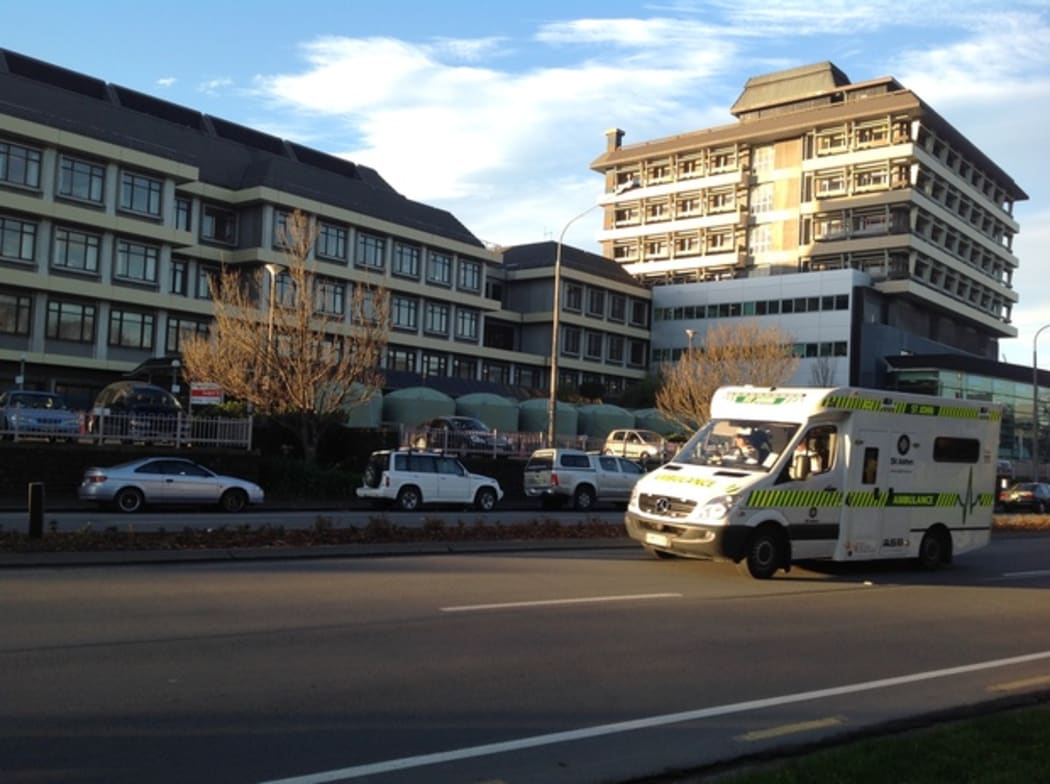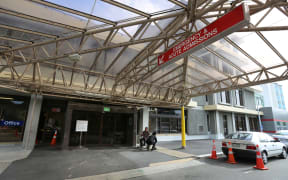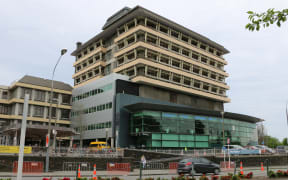Construction delays and cost over-runs are prolonging the earthquake risks facing patients and staff at Christchurch Hospital.

Christchurch Hospital. Photo: RNZ / Karen Brown
Six major hospital buildings at the Canterbury District Health Board's central city site have been listed as earthquake prone since May, but there is no safer space to shift patients into.
These include the Riverside block, one of the largest ward blocks in the country; four blocks at Parkside; and the diabetes and dialysis building. Two enclosed bridges that link the buildings are also earthquake-prone.
Quake-prone means the risk of a building suffering failure in a strong quake is between 10 to 25 times greater than a building that is up to 100 percent of New Building Standard (NBS).
However, the risk to people's lives varies according to which part of each of the six buildings scores less than 34 percent of the New Building Standard.
The 75 tonnes of water in tanks on the seventh floor is the leading risk factor at the Riverside.
An engineer has recommended that the DHB shift the water to ground level, and brace some of the walls to get the building above 34 percent NBS.
"To do that we would end up having to stop providing services to our community," chief executive David Meates said.
"And the assessment with that is that actually we would cause more harm to our community by making those sort of choices than actually managing the known risk we've got with the water tanks."
The tanks dumped water into the wards below in the 2011 quake, forcing a mass evacuation of 150 patients.
"The most functionally significant non-structural damage [at the hospital] was to internal and external roof coverings and roof top water tanks in the Riverside Building," a seismic engineer's report said.
Yet the tanks are vital; an interruption to the water supply even for just two hours would close the whole hospital because such things as MRI equipment depends on it.
The DHB has not looked seriously into shifting the tanks to the ground largely because they had been due to being shifted very soon instead into the new $500 million Acute Services building.
"We were actually anticipating being out of Riverside fully by September of this year and with that original timeline we would have ended up having drained the tanks by now," Mr Meates said.
But the Acute Services project, begun in 2016, is already running a year late.
"That means we're needing to manage this risk for another nine-to-twelve months."
Health Minister David Clark in a statement said that everyone involved in the Acute Services project was aware of the need to avoid further delays.
"'I am advised that despite delays the Acute Services Building will be complete some months before September 2019," Dr Clark said.
But recent minutes of the project's governance committee talk of multiple delays caused either by the ministry or the contractor CPB.
"A number of quality issues are emerging resulting in reworks," the March minutes said.
"Resourcing on site remains an issue. Since the last meeting some subcontractors have been stood down due to quality and workmanship issues and some have pushed back due to the contractor being contractually aggressive."
Other hospital buildings where quake damage has not been addressed include the Clinical Services Block and the four earthquake-prone Parkside blocks, where the highest risk is from external panels falling off.
The DHB is currently getting some of the highest risk panels on the Parkside blocks secured or removed.
Work on these again depends on opening the Acute Services building, and also the new 10,000-square-metre outpatients building which was meant to be finished about now, but after delay in getting the steel, November is the new completion date.
David Meates said the DHB faced a constant balancing act with risk. Since the quake, they had demolished 44 buildings and commissioned 24,000 reports done on buildings, and there would be no let-up soon, he said.
"Most people have not understood the significance in size and scale of the infrastructure damage that this district health board has been managing for over seven years.
"We have got another probably 10 years of construction and disruption just to keep services operating for this community.
"Fifty percent of all clinical services... have shifted on average four times, and they've still got another three shifts and moves to occur."
The Nurses union said it was waiting for feedback on the latest series of meetings called by management to address staff concerns that they were getting the full story about the Riverside block.
RNZ is seeking details from the Ministry of Health about the multiple cost over-runs and their impact on taxpayers.






